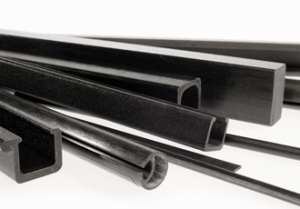The applications of composites in smart cities

In 2019, Auckland won a national award for its smart city innovations, including the SafeSwim programme, which provides real time data on beach safety and water quality. Organisations such as Land Information New Zealand (LINZ) are dedicated to integrating smart technology into cities across New Zealand - but how can we create a completely synergistic smart city? Here, Stephen Smith, Head of Asia Pacific Sales and Business Unit Manager at Exel Composites, explores the importance of composites in smart city infrastructure.
An estimated 60% of people will live in urban areas across the globe by 2030, with a third living in cities with a population of over half a million. When not correctly managed, rising numbers of urban residents can lead to housing shortages, traffic congestion and a strain on environmental resources.
With more people living in concentrated areas, cities must become more efficient to improve the quality of life for inhabitants and increase environmental sustainability.
Smart solutions
Smart cities incorporate technology that connects each component, such as transport and energy, together into a synergistic ecosystem. The data gathered by smart systems can be used to increase the efficiency of many areas of the city. For example, road traffic monitoring can be used to only turn on streetlights when needed, minimising energy consumption without compromising service to inhabitants.
As New Zealand’s most populous urban area and a key hub for business, Auckland is well recognised for its smart city potential. However, smart initiatives are also being rolled out in other cities across New Zealand. For example, Virtual Wellington, a project developed by Wellington City Council, is a virtual reality version of Wellington, which allows the user to explore and interact with a 3D city experience. The project has been used to model city proposals, understand city issues and help form responses to climate change challenges.
However, for Auckland and other cities to truly become smart, multiple different technologies - including materials technology - must be integrated into infrastructure to help harness real time data. Composites provide a versatile material that can be used in a range of applications to increase citywide connectivity.
Telecommunications
Smart cities and their residents will take advantage of an ever-growing number of connected devices. For example, a sensor in a bin can determine when it is full of rubbish, then send out a signal to a waste collection company before it overflows. For reliable, continuous data flow, the use of radio transparent materials will continue to increase. Unlike metals, composites such as fibreglass are radio transparent, making them the perfect material to use around telecommunication equipment.
The implementation of a 5G telecommunication network allows more data to be transmitted at a rate 100 times faster than via its 4G predecessor, due to 5G’s shorter wavelength form. However, the shorter wavelengths of the technology cannot travel as far as 4G and therefore requires a denser network of antennas.
With this in mind, 5G equipment will need to be integrated across the urban landscape in more innovative ways to conceal them from view, while remaining protected against year-round New Zealand weather changes.
The versatility and durability of composite materials and their ability to be customised into different shapes with various colours and finishes makes creative camouflaging solutions possible. Composites can also be integrated into other parts of smart city infrastructure, such as window cavities and door frames, to help 5G frequencies penetrate buildings.
Windows and doors
Increased connectivity isn’t the only benefit of carefully considered windows and doors. A key goal of the smart cities movement is to reduce energy usage where possible to use resources more sustainably. Addressing the efficiency of buildings across the area can produce significant energy savings.
Up to 40 per cent of energy used in a home is lost through windows. Fibreglass composites are highly thermally insulating, allowing the production of window and door frames with low U values. Furthermore, composites have a similar expansion rate to glass, forming tight frame structures without leaking problems.
In addition, composites boast high strength and stiffness while being resistant to chemicals and corrosion. Their superior durability means fibreglass window and door profiles can last a long time without replacement and with minimal maintenance, therefore reducing the use of resources to make new materials.
Exel Composites provides a wide range of composite solutions, including those for the telecommunication and construction industries. Exel designs and uses continuous manufacturing technology to produce a wide range of composite profiles, from simple tubes to very complex multi-cavity door sills. With over 60 years’ experience in the composites industry, Exel has the expertise to create innovative solutions with unique properties to suit specific applications.
An increasingly urban population means we must find creative solutions that allow concentrated groups of inhabitants to live together in a healthy and efficient way. Smart cities require high connectivity between components, allowing all processes to be optimised to lessen environmental impact and improve resident quality of life. Composites provide an innovative material that allows increased data transmission and increased efficiency of buildings - helping to create a sustainable way of life in the city.
Similar articles
More from Exel Composites
- The importance of resin selection in composite materials 6th May 2021
- Composite components: advancing automated machinery 20th April 2021
- The benefits of using composite components in machinery 15th March 2021
- Accommodating 5G frequencies with composite materials 16th February 2021












Write a comment
No comments